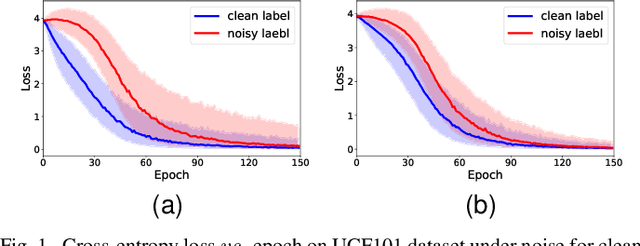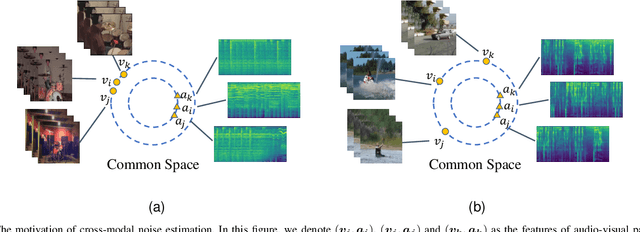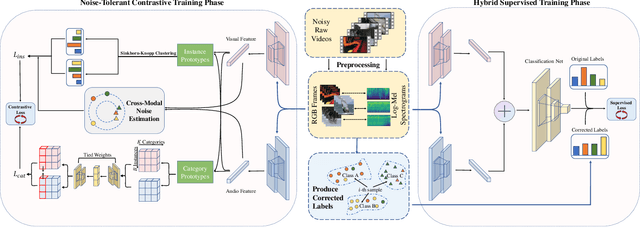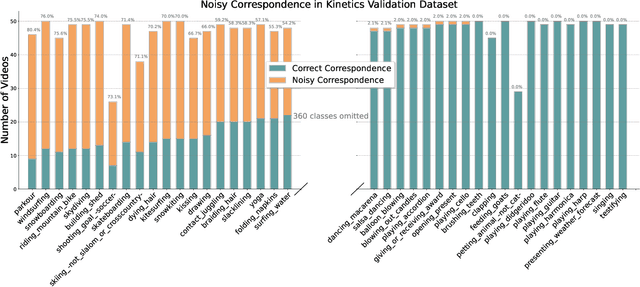Noise-Tolerant Learning for Audio-Visual Action Recognition
Paper and Code
May 20, 2022



Recently, video recognition is emerging with the help of multi-modal learning, which focuses on integrating multiple modalities to improve the performance or robustness of a model. Although various multi-modal learning methods have been proposed and offer remarkable recognition results, almost all of these methods rely on high-quality manual annotations and assume that modalities among multi-modal data provide relevant semantic information. Unfortunately, most widely used video datasets are collected from the Internet and inevitably contain noisy labels and noisy correspondence. To solve this problem, we use the audio-visual action recognition task as a proxy and propose a noise-tolerant learning framework to find anti-interference model parameters to both noisy labels and noisy correspondence. Our method consists of two phases and aims to rectify noise by the inherent correlation between modalities. A noise-tolerant contrastive training phase is performed first to learn robust model parameters unaffected by the noisy labels. To reduce the influence of noisy correspondence, we propose a cross-modal noise estimation component to adjust the consistency between different modalities. Since the noisy correspondence existed at the instance level, a category-level contrastive loss is proposed to further alleviate the interference of noisy correspondence. Then in the hybrid supervised training phase, we calculate the distance metric among features to obtain corrected labels, which are used as complementary supervision. In addition, we investigate the noisy correspondence in real-world datasets and conduct comprehensive experiments with synthetic and real noise data. The results verify the advantageous performance of our method compared to state-of-the-art methods.
 Add to Chrome
Add to Chrome Add to Firefox
Add to Firefox Add to Edge
Add to Edge